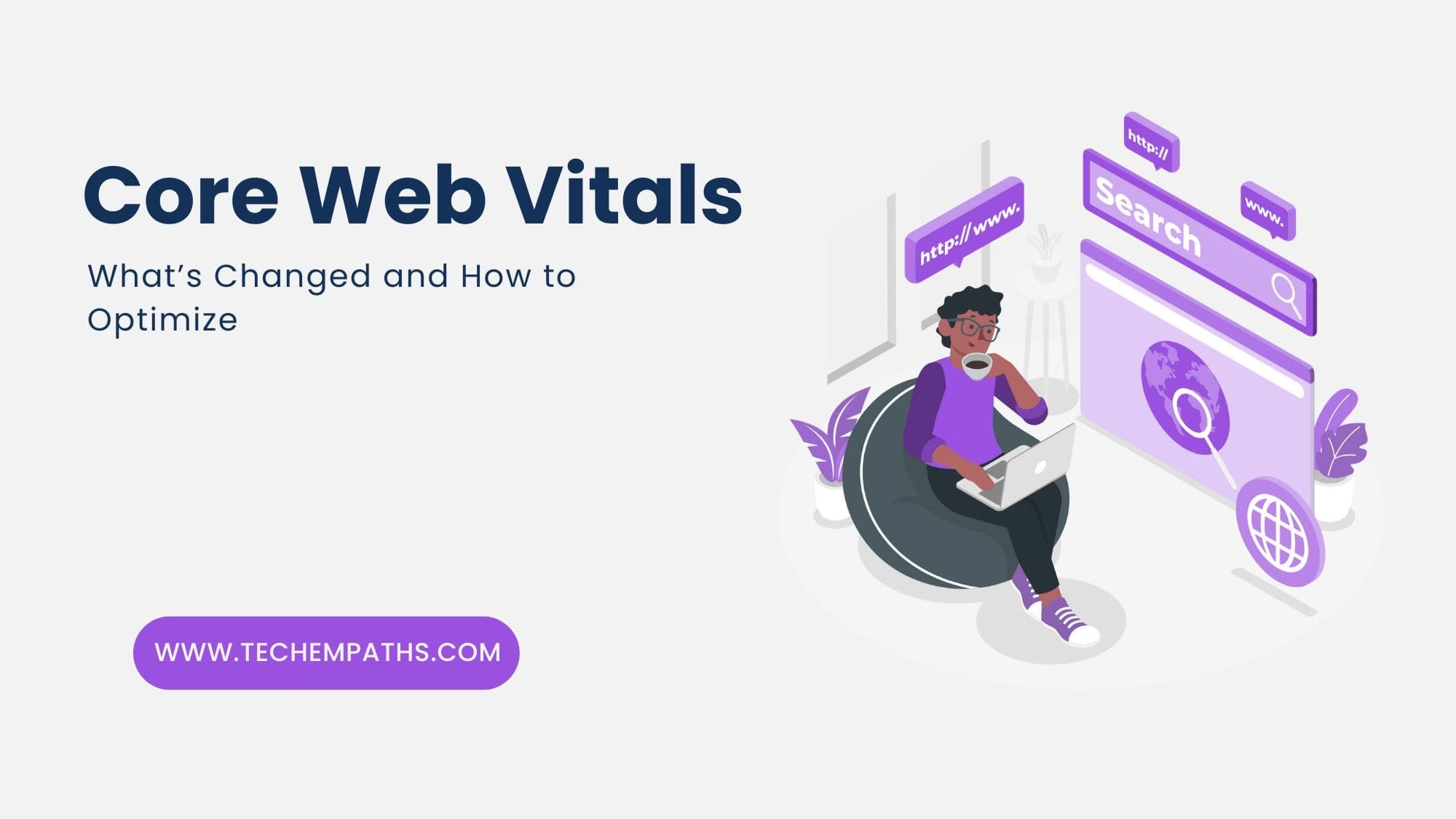Introduction
As the digital landscape evolves, so do the benchmarks for what makes a high-performing, user-friendly website. In 2025, Google continues to prioritize user experience with an updated version of its Core Web Vitals. These metrics, crucial for SEO success, have been refined to better reflect real-world user interactions.
In this article, we’ll explore the key changes in Core Web Vitals for 2025 and offer expert insights on how to optimize your website to meet these new standards. Whether you’re a digital marketer, developer, or SEO professional, staying ahead of these updates is essential for maintaining visibility and rankings in Google search.
What Are Core Web Vitals?
Core Web Vitals are a set of specific metrics that Google uses to measure user experience on a website. As of 2025, these vitals focus on three primary areas:
- Loading performance
- Interactivity
- Visual stability
These are quantified through the following key metrics:
- Largest Contentful Paint (LCP): Measures load speed. Ideal score: ≤ 2.5 seconds
- Interaction to Next Paint (INP): Replaces First Input Delay (FID). Measures responsiveness. Ideal score: ≤ 200 ms
- Cumulative Layout Shift (CLS): Measures visual stability. Ideal score: ≤ 0.1
What’s Changed in 2025?
1. INP Replaces FID (Fully Rolled Out)
The most significant update for 2025 is the complete transition from First Input Delay (FID) to Interaction to Next Paint (INP). While FID measured the delay of the first interaction, INP assesses the full responsiveness of a page across multiple interactions.
- Why It Matters: INP provides a more comprehensive view of user engagement and frustration.
- Optimization Tip: Reduce main-thread blocking time and optimize long tasks using tools like Lighthouse and Chrome DevTools.
2. Dynamic Scoring Based on Device Type
Google now weights Core Web Vitals scores differently for mobile vs desktop. This means a site may pass CWV on desktop but fail on mobile if not optimized responsively.
- Optimization Tip: Use responsive design, lazy loading, and AMP (if suitable) to improve mobile scores.
3. Greater Emphasis on Real User Metrics (RUM)
Google prioritizes field data over lab data. Real User Metrics from tools like Chrome UX Report (CrUX) now have more influence on ranking signals.
- Optimization Tip: Monitor CrUX and Web Vitals data in Search Console regularly. Prioritize actual user experiences over simulated tests.
4. AI-Driven Evaluation and Thresholds
In 2025, Google uses machine learning to adapt thresholds for Core Web Vitals based on user context, behavior, and content type.
- Optimization Tip: Ensure your site performs well across various user personas, network speeds, and content types.
Why Core Web Vitals Matter for SEO
Core Web Vitals are part of Google’s Page Experience update and directly impact your rankings. In competitive niches, even minor CWV improvements can lead to better visibility and higher organic traffic.
SEO Benefits of Optimizing CWV:
- Improved search rankings
- Lower bounce rates
- Higher user engagement
- Increased conversion rates
- Better ad performance (especially for sites running display ads)
How to Optimize for Core Web Vitals in 2025
1. Optimize Largest Contentful Paint (LCP)
Goal: Ensure the main content loads within 2.5 seconds.
Strategies:
- Use efficient image formats (WebP, AVIF)
- Implement lazy loading for below-the-fold images
- Optimize server response time (TTFB)
- Preload key assets (fonts, images)
2. Improve Interaction to Next Paint (INP)
Goal: Maintain consistent responsiveness below 200ms.
Strategies:
- Minimize JavaScript execution time
- Break up long tasks (>50ms)
- Use requestIdleCallback() for non-essential tasks
- Defer third-party scripts
3. Enhance Cumulative Layout Shift (CLS)
Goal: Achieve a CLS score below 0.1 for visual stability.
Strategies:
- Set explicit width and height for all media
- Avoid inserting content above existing content
- Use CSS transform animations instead of layout-affecting properties
4. Use Tools to Monitor and Audit Performance
Recommended Tools:
- Google PageSpeed Insights
- Lighthouse (Chrome DevTools)
- Web Vitals Chrome Extension
- Search Console – Core Web Vitals Report
- Cloudflare Web Analytics
Trending Keywords to Include:
- Core Web Vitals 2025
- Interaction to Next Paint (INP)
- Web performance optimization
- SEO ranking factors
- Page experience update
- Google Core Web Vitals update
- Mobile-first performance
- LCP and CLS optimization
Final Thoughts
Core Web Vitals in 2025 are more sophisticated and user-focused than ever before. With INP now a standard, dynamic scoring based on device type, and AI-adjusted thresholds, businesses must take a proactive approach to site optimization.
By investing in performance, not only do you gain SEO advantages, but you also provide a better experience for your visitors. This is the new gold standard in web design and digital marketing.
Start optimizing today, and stay ahead of the curve — because in 2025, user experience = search success.




Leave a Reply